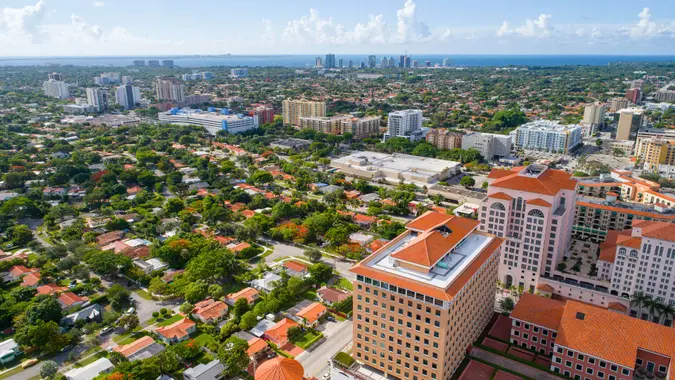How Did a 9-5 Salary for Baby Boomers Compare to What Millennials Make Today?

Commitment to Our Readers
GOBankingRates' editorial team is committed to bringing you unbiased reviews and information. We use data-driven methodologies to evaluate financial products and services - our reviews and ratings are not influenced by advertisers. You can read more about our editorial guidelines and our products and services review methodology.

20 Years
Helping You Live Richer

Reviewed
by Experts

Trusted by
Millions of Readers
Millennials are currently the highest-earning generation, making more money than any other generation did at their age.
Economist Kevin Drum looked at inflation-adjusted household income for baby boomers and millennials as of 2021. He found that the average 40-year-old millennial had an income of $49,000, higher than what the average baby boomer earned when they were 40 ($39,000).
And yet, millennials were — and are — struggling.
Let’s look at how the average salary for baby boomers compared to what millennials make today — and how the current economy is setting millennials back.
The Baby Boomer Generation’s Ability To Build Wealth
According to the National Bureau of Economic Research, American economic expansion from the postwar era through the early 1970s helped baby boomers achieve economic prosperity. During this time, there were plenty of jobs available and relatively steady income growth, which allowed boomers to build wealth slowly.
On top of this, a hot real estate market allowed boomers to purchase homes when prices were lower and benefit from appreciating home values, as reported by GOBankingRates.
At the beginning of 1963, the average home price was $19,300 (or around $193,500 in today’s dollars), according to the St. Louis Federal Reserve. Today, the average home price is around $492,300.
On top of this, tuition costs were relatively low. In the 1963-64 academic year, tuition and fees at the average public four-year university were $243 annually (around $2,465 in today’s dollars), according to the Education Data Initiative. Today, the average cost of a public four-year university is $9,349 annually.
In other words, it was easier for boomers to attend college without taking on debt, find a stable job, and buy an affordable home.
How Millennials Are Struggling
Millennials in today’s job market face a more complex landscape. While they may be making more than boomers did at their age, the cost of living has outpaced wage increases in many ways.
Wages have risen by almost 35% since 2006, according to Payscale. But when you factor in inflation, “real wages” have fallen almost 11%. That means the typical worker can afford less than they could in 2006.
Housing and education costs have also skyrocketed, making achieving key milestones that can help build wealth is harder.
While millennials attend college and attain degrees at higher rates than past generations, student loans saddle many with six-figure balances, according to Pew Research.
Millennials also don’t have many protections baby boomers have enjoyed in the workforce, like pension plans and unions, which can help protect wages and shore up retirement funds.
Understanding these trends can help people understand why millennials feel so far behind — and it’s not pricy avocado toasts, coffee at Starbucks or their iPhones. While they may be able to start gaining more wealth in their later years, it’s not guaranteed they’ll catch up to boomers by any means.
More From GOBankingRates
 Written by
Written by  Edited by
Edited by 

























